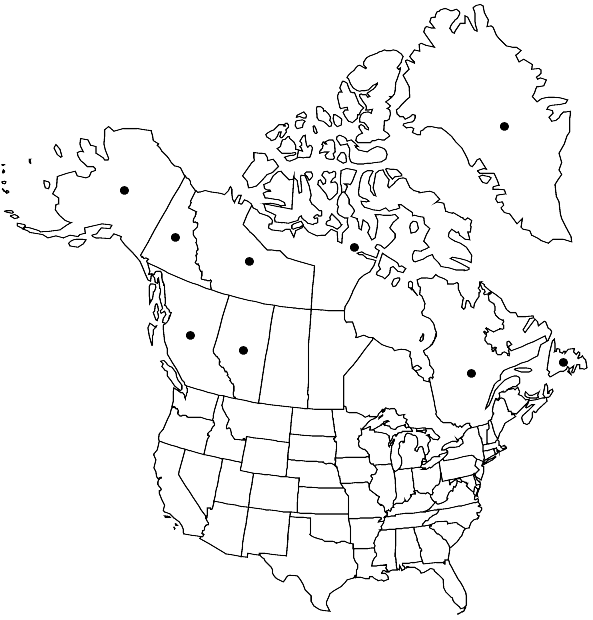Difference between revisions of "Timmia sibirica"
Kongl. Svenska Vetensk. Acad. Handl., n. s. 23(10): 24. 1890,.
FNA>Volume Importer |
FNA>Volume Importer |
Revision as of 19:38, 24 September 2019
Plants with deciduous longer distal leaves with a less well-developed sheath. Leaf apex acute to slightly acuminate; costa percurrent or subpercurrent; sheath clear in the distal leaves, clear or dark reddish black in the proximal leaves; limb green, non-pellucid; limb-sheath transition gradual; limb margins dentate in distal 1/3–1/2, crenulate or slightly toothed proximally, limb lamina cells (8–)11–18(–22) × (9–)10–19 µm, mammillose and with 2–4 papillae on the adaxial surface, with 2–4 papillae and generally also mammillose on the abaxial surface; cells of the sheath lamina with (0–)1–8(–10) large round, often verrucose papillae over the abaxial surface of the lumens; cells at leaf insertion abruptly differentiated into 1 to a few rows of fragile, hyaline cells; limb costa with the abaxial cells 1- or pluripapillose, and the adaxial cells mammillose and pluripapillose. Sexual condition dioicous; perichaetial leaves longer and more evenly tapering to the apex than stem leaves, with the sheath poorly developed; perigonial leaves shorter than stem leaves, consisting mostly of the sheaths, abruptly apiculate. Calyptra without longitudinal split, not persistent on seta. Capsule non-plicate (only immature ones known); exothecial cells with very sinuose walls; stomata on the neck; endostome cilia with numerous blunt appendiculations on the interior surfaces.
Habitat: Only one sporulating specimen is known (from Alaska), but the capsules are immature. Wet or moist, predominantly calcareous sites, often near small streams, on seepage slopes, near snowmelt areas, or in depressions in open tundra, frequently intermixed with other mosses, including other species of Timmia
Elevation: low to moderate elevations (0-1500 m)
Distribution

Greenland, Alta., B.C., Nfld. and Labr. (Nfld.), N.W.T., Nunavut, Que., Yukon, Alaska, Europe (Norway, Russia).
Discussion
Timmia sibirica is a very distinct species: the limb lamina and limb costa cells that are mamillose and pluripapillose on both surfaces are unique within the genus. It is an Arctic species, rare south of 65° N. Timmia sibirica has somewhat larger leaf cells than T. norvegica (and the largest cells of any Timmia taxon), and it has deciduous leaves that can aid in vegetative dispersal.
Selected References
None.
